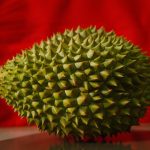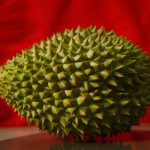To remove mildew smell from fabrics, start by identifying the source of the odor. Air out the affected items in a well-ventilated space. Wash them with a cup of white vinegar or sprinkle baking soda on smelly spots. Consider using hydrogen peroxide for tough odors. Don’t forget commercial odor eliminators for extra help. Finally, dry your fabrics in the sunlight to kill spores. There’s more to maximizing freshness and preventing mildew, so keep exploring!
Table of Contents
Key Takeaways
- Identify the source of mildew smell by checking damp fabrics and hidden areas like the washing machine before attempting removal.
- Air out affected fabrics outdoors or near an open window to enhance fresh air circulation and sunlight exposure.
- Wash items with natural remedies like white vinegar or baking soda to effectively neutralize odors during the laundry process.
- Utilize essential oils, such as tea tree or lavender, during washing or drying for added fragrance and antibacterial properties.
- Implement preventive measures, like proper storage and regular washing, to stop mildew from returning in the future.
Identify the Source of Mildew Smell
To tackle that persistent mildew smell, you first need to identify its source.
Check your fabrics thoroughly; inspect closets, drawers, or areas where damp items might linger. Look for any clothing or linens that have been stored without proper drying. If you’ve recently washed items but didn’t dry them completely, that could be your culprit.
Don’t forget to examine your washing machine, as mold can build up in hidden corners. It’s also essential to take into account the environment—high humidity levels can contribute to mildew growth.
Air Out the Affected Fabrics
Once you’ve pinpointed the source of the mildew smell, it’s time to air out the affected fabrics. Fresh air can work wonders in eliminating unpleasant odors.
Identify the mildew source and let fresh air work its magic on your affected fabrics to eliminate those unpleasant odors.
Find a well-ventilated area outdoors or near an open window to hang your fabrics. Here’s how to maximize the effectiveness of the air-out process:
- Hang items on a clothesline: Let them sway gently in the breeze.
- Spread fabrics on a flat surface: Allow direct sunlight to penetrate, which can help neutralize odors.
- Use a fan: Position it to circulate air around the fabrics, enhancing airflow.
- Flip items occasionally: Verify all sides get equal exposure to fresh air.
This simple method can considerably reduce that musty smell before you move on to deeper cleaning solutions.
Wash With Vinegar
When you wash your fabrics, vinegar can be a game changer for removing mildew smells.
Its natural deodorizing properties work wonders, especially when combined with proper washing techniques.
Plus, we’ll share some additional fabric care tips to keep your items fresh and clean.
Vinegar’s Natural Deodorizing Properties
If you’re looking for an effective way to eliminate mildew smell from your fabrics, washing with vinegar can work wonders.
Vinegar’s natural deodorizing properties help neutralize odors instead of just masking them. When you add vinegar to your wash, it can:
- Break down mildew particles – Helping to lift the source of the smell from the fabric.
- Balance pH levels – Creating an environment where odors can’t thrive.
- Freshen fabrics – Leaving your clothes smelling clean and revitalized.
- Act as a natural fabric softener – Making your clothes feel softer without harsh chemicals.
Incorporating vinegar into your laundry routine not only tackles stubborn odors but also promotes a fresher, cleaner wardrobe.
Proper Washing Techniques
Using vinegar in your laundry is just one part of a successful strategy for removing mildew odors from fabrics.
Start by adding one cup of white vinegar to your washing machine during the rinse cycle. This helps neutralize the mildew smell and breaks down any lingering bacteria.
Make sure to wash your fabrics in hot water, if safe for the material, as heat can enhance the effectiveness of vinegar. Avoid overloading the washer; giving your fabrics enough space allows for better cleaning.
After washing, hang your items outside to dry if possible, as fresh air also helps eliminate odors.
If the mildew smell persists, repeat the process or soak the fabrics in a vinegar solution before washing again.
Additional Fabric Care Tips
While vinegar is a powerful ally in the fight against mildew smells, there are additional fabric care tips worth considering to keep your textiles fresh.
Incorporating these methods will help maintain your fabrics and prevent odors from returning.
- Baking Soda: Sprinkle baking soda on your fabrics before washing to absorb moisture and odors.
- Sunlight: Hang your items outside in the sun; UV rays naturally eliminate mildew spores and freshen fabrics.
- Essential Oils: Add a few drops of essential oils like lavender or tea tree to your wash for a pleasant scent and antibacterial properties.
- Regular Washing: Wash your fabrics regularly to prevent mildew buildup, especially in humid conditions.
Utilize Baking Soda
Baking soda is a powerful tool in your fight against mildew odors in fabrics.
You can sprinkle it directly on the affected areas or mix it with water for a paste, making it easy to apply.
Its effectiveness lies in its ability to absorb odors, leaving your fabrics smelling fresh again.
Baking Soda Application Techniques
One effective method to combat mildew smell in fabrics is by harnessing the power of baking soda. You can easily apply it to freshen up your items.
Here are four techniques you can use:
- Sprinkle and Let Sit: Generously sprinkle baking soda directly onto the fabric, allowing it to sit for several hours or overnight to absorb odors.
- Baking Soda Paste: Mix baking soda with a little water to create a paste. Apply it to particularly smelly areas and let it dry before brushing it off.
- Laundry Boost: Add half a cup of baking soda to your laundry detergent during the wash cycle for extra odor-fighting power.
- Baking Soda Sachets: Fill small fabric bags with baking soda and place them in storage areas to keep fabrics smelling fresh.
Effectiveness Against Mildew Odor
Using baking soda is an effective way to neutralize mildew odors in fabrics. When you sprinkle baking soda on affected areas, it absorbs moisture and odors, tackling the musty smell head-on.
For best results, let it sit for a few hours, or even overnight, to give it time to work its magic. Afterward, simply shake or vacuum off the excess powder.
You can also create a paste by mixing baking soda with water and applying it to stubborn spots. Rinse the fabric thoroughly afterward.
Additionally, using baking soda in your laundry can boost your detergent’s effectiveness, ensuring a fresher finish. This versatile powder is a simple, eco-friendly solution for combating mildew smell in your favorite textiles.
Apply Hydrogen Peroxide
To effectively tackle that stubborn mildew smell in your fabrics, consider applying hydrogen peroxide. This powerful solution not only eliminates odors but also disinfects the fabric.
Consider using hydrogen peroxide to eliminate stubborn mildew odors in your fabrics while also disinfecting them effectively.
Here’s how to use it:
- Dilute: Mix equal parts of hydrogen peroxide and water in a spray bottle.
- Test: Before applying, test a small, hidden area of the fabric to verify colorfastness.
- Spray: Generously spray the solution onto the affected areas, focusing on spots with the strongest odor.
- Air Dry: Allow the fabric to air dry completely, preferably in a well-ventilated area or under sunlight, which helps enhance the odor-fighting effect.
This method can rejuvenate your fabrics, leaving them fresh and mildew-free!
Try Essential Oils
Essential oils can be a fantastic way to tackle mildew smells in your fabrics.
Popular options like tea tree and lavender not only mask odors but also offer antibacterial properties.
You’ll find that applying them correctly can make a significant difference in freshness.
Popular Essential Oils
When it comes to tackling mildew smells in fabrics, popular essential oils can be a game changer.
These oils not only help eliminate odors but also add a delightful fragrance to your textiles.
Here are four essential oils you might consider:
- Tea Tree Oil: Known for its antifungal properties, it fights mildew effectively.
- Lavender Oil: Offers a calming scent while rejuvenating fabrics.
- Lemon Oil: Its zesty aroma can brighten up any smell, leaving a clean scent.
- Eucalyptus Oil: Known for its invigorating fragrance, it also helps in disinfecting.
Incorporating these oils into your cleaning routine can transform your fabrics, making them smell fresh and inviting again.
Application Techniques
While you might think that simply adding essential oils to your laundry will do the trick, there are specific application techniques that can enhance their effectiveness in removing mildew smells from fabrics.
First, mix a few drops of your chosen essential oil with water in a spray bottle. Lightly mist your fabrics before washing. This pre-treatment helps the oils penetrate and neutralize odors.
Next, add several drops of essential oil directly to your washing machine’s detergent compartment during the wash cycle.
After washing, hang your fabrics in a well-ventilated area to air dry, as this helps enhance the scent.
Finally, consider using essential oils in your dryer by adding a few drops to dryer balls to infuse your laundry with a fresh aroma.
Use Commercial Odor Eliminators
If you’re struggling to banish that stubborn mildew smell from your fabrics, using commercial odor eliminators can be a game changer.
These products are specially formulated to tackle tough odors and can save you time and effort.
When you choose a commercial solution, look for:
- Enzyme-based sprays that break down odor-causing bacteria.
- Odor-neutralizing pods that can be tossed in the wash for extra power.
- Fabric freshening sprays that provide an instant burst of freshness.
- Laundry additives designed to eliminate odors during the washing cycle.
Just follow the instructions on the label, and you’ll soon notice your fabrics smelling fresh and clean again.
Don’t let mildew hold you back any longer!
Dry in Sunlight
Drying your fabrics in sunlight is one of the most effective ways to eliminate that lingering mildew smell. The sun’s ultraviolet rays help to kill mold spores and bacteria, which are often the culprits behind the odor.
When you hang your clothes or linens outside, the fresh air also helps to circulate and banish unpleasant scents. Make sure to spread out the fabric to allow maximum exposure to sunlight for the best results.
If you can, choose a sunny, breezy day to speed up the drying process. Just remember to check the fabric care labels, as some delicate items may not fare well in direct sunlight.
Prevent Future Mildew Growth
To keep mildew from making a comeback, it’s essential to take preventive measures right from the start. Here are some effective steps you can follow:
- Store Fabrics Properly: Make certain to keep your fabrics in a cool, dry place. Avoid damp areas like basements.
- Use Dehumidifiers: Consider using a dehumidifier in humid environments. This helps reduce moisture levels in the air.
- Regular Washing: Wash your fabrics frequently, especially if they’ve been exposed to moisture. Clean them thoroughly to eliminate any lingering spores.
- Ventilation: Guarantee proper airflow in your home. Open windows and use fans to keep air circulating, preventing stagnant conditions.
Seek Professional Cleaning Services
When you’re struggling to eliminate stubborn mildew smells from your fabrics, seeking professional cleaning services can make a significant difference.
Experts have the right tools and techniques to tackle deep-set odors that DIY methods often miss. They can assess your fabrics, identify the best cleaning method, and guarantee the job is done safely and effectively.
Plus, they use specialized products that target mildew without damaging your items. Don’t hesitate to ask for references or reviews to find a reputable service.
Investing in professional cleaning not only restores your fabrics but also gives you peace of mind. In the end, it’s about preserving your belongings and enjoying a fresher home environment. You deserve that!
Frequently Asked Questions
Can I Use Bleach to Remove Mildew Smell From Fabrics?
You can use bleach to remove mildew smell, but be cautious. It can damage some fabrics and may not eliminate the odor completely. Always test a small area first and follow care instructions for best results.
How Can I Tell if Mildew Has Penetrated the Fabric?
You can tell if mildew’s penetrated the fabric by inspecting for dark spots or stains, feeling for stiffness, and noticing any persistent musty odor. If these signs appear, it’s likely the mildew has infiltrated.
Are There Specific Fabrics That Are More Prone to Mildew Smell?
Have you ever wondered which fabrics attract mildew smells more? Natural fibers like cotton and linen are especially prone due to their moisture retention, while synthetic materials tend to resist mildew better. Keep that in mind!
Does Washing Temperature Affect Mildew Smell Removal?
Yes, washing temperature does affect mildew smell removal. Higher temperatures often help eliminate odors more effectively, but always check fabric care labels to avoid damage. Experimenting with various temperatures can lead to better results for you.
How Often Should I Clean Fabrics to Prevent Mildew Smell?
You might think cleaning fabrics less often saves time, but regular cleaning every few weeks helps prevent mildew smell from developing. It keeps your fabrics fresh, extending their lifespan and ensuring a pleasant environment.
- Care Instructions for Nonwoven Fabrics: Washing and Drying - July 11, 2025
- The Difference Between Woven and Nonwoven Wallpaper Explained - July 11, 2025
- Why Choose Woven Over Nonwoven (And Vice Versa) - July 11, 2025







